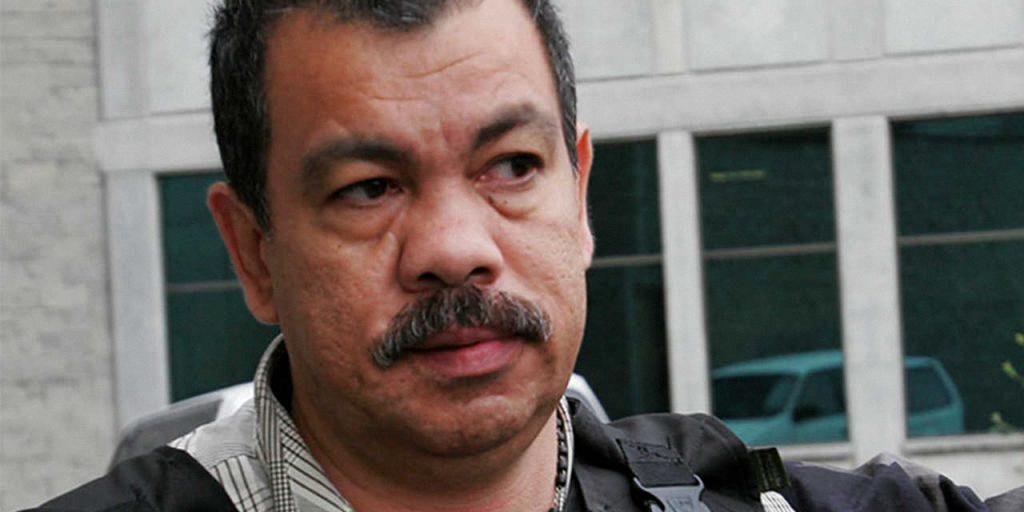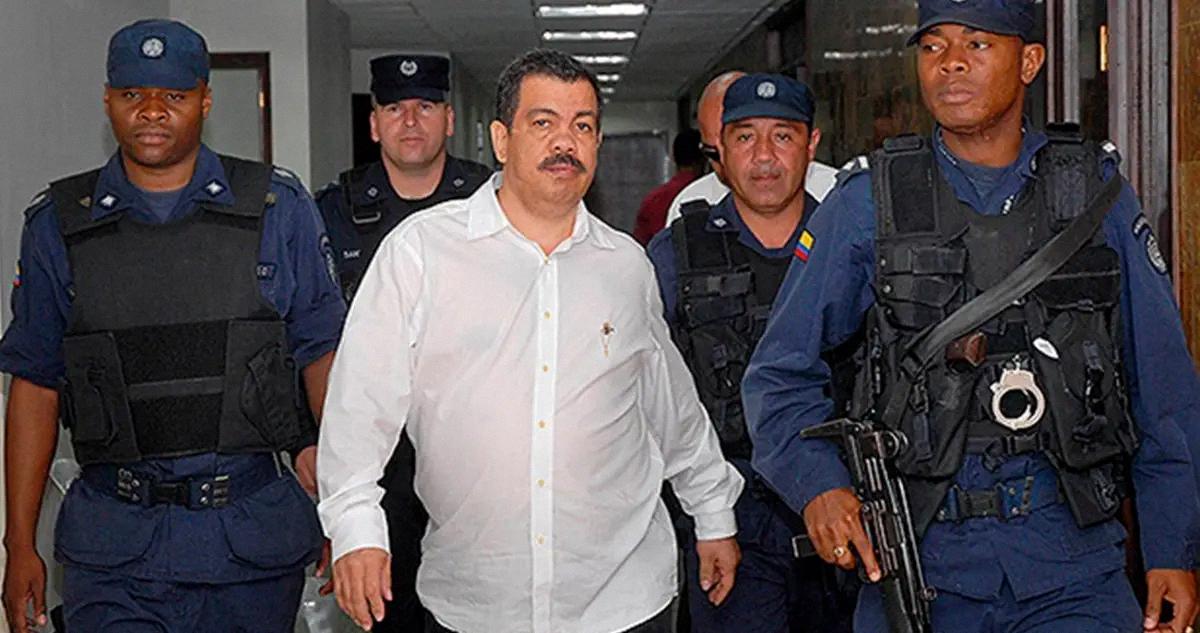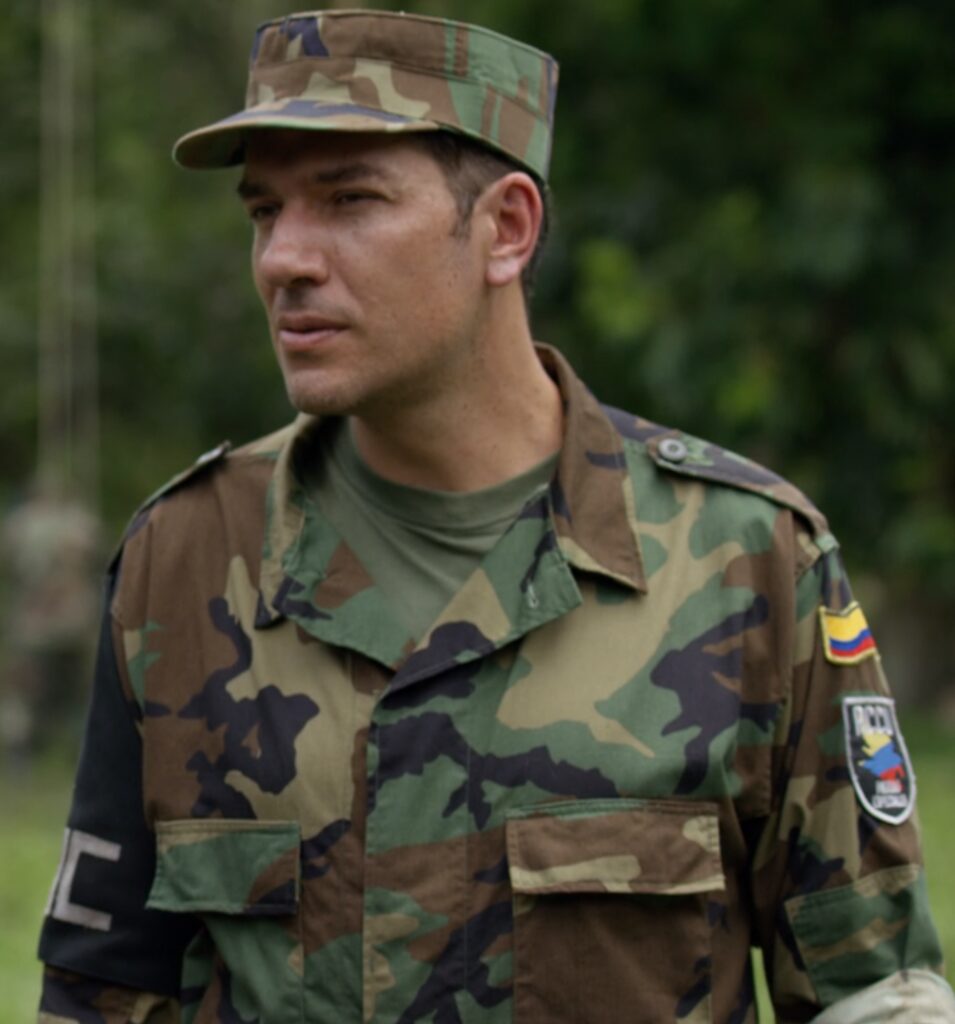Don Berna, also known as Diego Fernando Murillo Bejarano, was a notorious drug kingpin from Colombia who rose to power during the height of the Medellín Cartel’s reign. He was considered to be one of the most brutal and ruthless members of the cartel, responsible for countless murders and drug trafficking operations.
Berna began his criminal career as a hitman for the Medellín Cartel, working under the infamous drug lord Pablo Escobar. He quickly rose up the ranks, eventually becoming one of the cartel’s top lieutenants. After Escobar’s death in 1993, Berna formed his own criminal organization, known as the Oficina de Envigado.
Under Berna’s leadership, the Oficina de Envigado became one of the most powerful criminal organizations in Colombia. They controlled a vast network of drug trafficking routes, and were responsible for smuggling large quantities of cocaine into the United States and other countries around the world.
Despite his violent reputation, Berna was known for his strategic thinking and business acumen. He was able to maintain his power and influence for many years, even as other drug lords were being taen down by law enforcement agencies.
However, Berna’s luck eventually ran out. In 2005, he was arrested by Colombian authorities and extradited to the United States in 2008 to face charges of drug trafficking and money laundering.
Despite the seriousness of the charges against him, Berna initially refused to cooperate with US prosecutors. He was offered a plea bargain in exchange for information about his criminal associates, but he refused to confess his crimes and give up his accomplices.
As a result, Berna was sentenced to 31 years in prison and fined $4 million USD. He is currently serving his sentence in a US federal prison.
The arrest and conviction of Don Berna was a major victory for law enforcement agencies in both Colombia and the United States. His removal from the drug trade has made communities in both countries safer, and has helped to disrupt the operations of one of the most powerful criminal organizations in the world.
The story of Don Berna is a cautionary tale about the dangers of organized crime and the importance of law enforcement efforts to combat it. While powerful drug lords like Berna may seem invincible, they are ultimately brought down by the persistence and determination of those who seek to hold them accountable for their crimes.
The Fate of Don Berna in Narcos
In the Netflix series Narcos, Don Berna is portrayed as a powerful drug lord and leader of the Cali Cartel. In real life, Berna, whose real name is Diego Fernando Murillo Bejarano, was a prominent Colombian drug trafficker and paramilitary leader. He was arrested in 2005 and extradited to the United States in 2008.
US prosecutors were not interested in a plea bargain that woud force Berna to confess his crimes and give up his accomplices. Instead, he was sentenced to 31 years in prison. This is in contrast to the portrayal of Don Berna in Narcos, where he is shown to be an ally of the Cali Cartel and a key player in their operations.
It is important to note that while Narcos is based on real-life events and characters, it is a work of fiction and takes artistic liberties in its portrayal of historical events.

Source: colombiareports.com
Sentence Length of Don Berna’s Sentence
Don Berna was sentenced to 376 months in prison, which is equivalent to 31 years and 4 months. In addition to his prison sentence, he was also fined $4 million USD. This sentence was handed down on April 22, 2009, and it is considered to be a significant victory for law enforcement agencies in the United States and Colombia, as it removed a notorious drug kingpin from the streets and made American and Colombian communities safer.
Capture of Don Berna
Don Berna was captured through the triangulation of a phone call he made to his family who were staying in a hotel in Bogotá on December 2. The Search Bloc, a special anti-narcotics unit of the Colombian National Police, intercepted the call and traced it to a small house in the Los Olivos neighborhood of Medellín. Don Berna was located in the house along with his brother and 20 of his men. The police, along with Don Berna’s rival drug lord, Pablo Escobar, moved in and captured him without incident.
Was Don Berna Featured in Narcos?
Don Berna was a character in the TV series Narcos. He was portrayed by Mauricio Cujar. Don Berna was a powerful Colombian drug lord and paramilitary leader who initially worked with Pablo Escobar but later switched his allegiance to the Cali Cartel. In the series, his character played a significant role in the drug trade and the various conflicts between drug cartels and law enforcement agencies. Mauricio Cujar’s portrayal of Don Berna was praised for its authenticity and depth, making him one of the standout characters in the series.
What Parts of Narcos Are Not Factual?
While Narcos is based on real events and characters, there are several parts of the show that are not entirely accurate. First, Roberto Escobar, the brother of Pablo Escobar, is completely absent from the story. In reality, Roberto was heavily involved in his brother’s drug empire and was even a top lieutenant.
Second, the characters of Cockroach and Lion are completely made-up. They are not based on any real individuals involved in the drug trade.
Third, Horacio Carrillo, the Colombian police officer who is a major character in the show, was not a real person. While there were certainly officers who pursued Pablo Escobar, there was no one named Horacio Carrillo involved in those efforts.
Fourth, La Quica’s real name is actually Dadeny Muñoz Mosquera, not Juan Diego Diaz as portrayed in the show.
While Narcos does provide a glimpse into the world of drug trafficking in Colombia in the 1980s and 1990s, it is important to remember that the show takes some creative liberties and is not a completely accurate portrayal of historical events.

Source: allthatsinteresting.com
Assessing the Historical Accuracy of Narcos
According to an interview with the creators of the show, Narcos is approximately 50% fiction and 50% non-fiction. However, they do strive to stick to the true chronology of events and have ensured that the timeline is accurate. While there may be some artistic license used in the show, they have made an effort to portray the events as they actually happened, making it a relatively historically accurate portrayal of the drug trade and the people involved in it.
The Fate of Los Pepes After Escobar’s Death
After the death of Pablo Escobar, Los Pepes (short for “People Persecuted by Pablo Escobar”) disappeared from the Colombian scene. The group’s main objective was to bring an end to the reign of terror that Escobar and his Medellin Cartel had inflicted on the Colombian people. With Escobar’s death, Los Pepes apparently felt that their work was complete.
Since then, the Colombian government has made significant strides in reestablishing its authority and eradicating the influence of drug cartels and insurgent groups such as FARC. While drug exports from Colombia continue, the government has been successful in contaning the criminal organizations and preventing them from challenging state authority.
The demise of Los Pepes and the subsequent progress made by the Colombian government represent a positive step forward for the country’s stability and security.
Height of La Quica
La Quica is not a person or a building, it is actually a town located in the province of Jujuy, Argentina. Therefore, it is not accurate to measure its height. However, the town is situated at an altitude of 3,442 meters (11,293 feet) above sea level, making it one of the highest towns in Argentina. This altitude may cause some physical discomfort to visitors who are not accustomed to high altitudes, but it also offers spectacular views of the surrounding mountains and valleys.
The Leader of Los Pepes
Fidel Castaño was widely regarded as the leader of Los Pepes, a vigilante group that played a significant role in the downfall of notorious Colombian drug lord Pablo Escobar. Though Escobar was responsible for the deaths of many Colombians, Los Pepes was primarily made up of cocaine traffickers and manufacturers who sought to benefit from his downfall. Castaño’s leadership of Los Pepes has been documented in varios sources, and his involvement in the group is widely acknowledged. Fidel Castaño was a central figure in the tumultuous world of Colombian drug trafficking and played a prominent role in the events surrounding the downfall of Pablo Escobar.

Did Blackie Really Exist?
Blackie or Flipper, whse real name was Nelson Hernández Luballscumí, was a real person who worked as a sicario for the infamous Medellín cartel. He was a close associate of Pablo Escobar and played a key role in the cartel’s violent operations. Blackie was involved in numerous murders and assassinations, including that of Colombian presidential candidate Luis Carlos Galán in 1989. He was eventually captured by authorities in 1993 and sentenced to 30 years in prison for his crimes. So, there is no doubt that Blackie was a real person and a notorious figure in the world of organized crime.
The Deadliest Hitman of Pablo Escobar
Pablo Escobar’s deadliest hitman was Jhon Jairo Velásquez, also known as “Popeye” or “JJ.” Velásquez was a high-ranking member of the Medellín Cartel and was responsible for carrying out numerous murders, kidnappings, and acts of terrorism on behalf of Escobar. He is believed to have personally killed more than 250 people and to have been involved in the deaths of thousands more. Velásquez was eventually captured in 1992 and served more than 23 years in prison for his crimes. Despite his past, Velásquez has since become somewhat of a public figure in Colombia, having written books and gven interviews about his life and experiences as a hitman for the Medellín Cartel.
Did the Military Facilitate Pablo Escobar’s Escape?
There are conflicting reports about whether soldiers let Pablo Escobar escape or not. According to some sources, the Colombian National Army was surrounding the facility whre Escobar was being held, known as La Catedral, in July 1992. It is said that Escobar simply walked out the back gate of the facility while the soldiers were distracted or possibly bribed. However, other sources suggest that the soldiers were not directly involved in Escobar’s escape and that it was due to a combination of factors, including his own cunning and the corruption within the Colombian government and law enforcement agencies. Ultimately, the exact details of Escobar’s escape remain unclear and are still a subject of debate among historians and experts.
The Origin of the Name ‘La Quica’
La Quica was called La Quica because of his resemblance to his great-aunt from a young age. The nickname “La Quica” is Colombian slang for “the fat girl”. Despite the derogatory connotation of the nickname, La Quica rose to become one of Pablo Escobar’s highest ranking enforcers.

Pablo’s Best Friend
Pablo’s best friend is Tyrone, a young moose known for his easy-going and sensible nature. The two share a strong bond and are often seen together, engaging in various activities and adventures. Despite their differences in species, their friendship is a testament to the fact that true friendship knows no boundaries.
Pablo Escobar’s Right Hand Man
Jhon Jairo Velásquez Vásquez, also known as “Popeye,” was Pablo Escobar’s right-hand man. He was a member of the Medellín Cartel, one of the most powerful drug cartels in Colombia during the 1980s and 1990s. Popeye played a crucial role in Escobar’s drug trafficking operations, including the distribution of cocaine to the United States and Europe. He acted as Escobar’s hitman, carrying out numerous assassinations and bombings on his behalf. After Escobar’s death, Popeye was arrested and spent 23 years in prison. He was released in 2014 and has since become a controversial figure, appearing in documentaries and interviews whre he discusses his experiences with the cartel.
Conclusion
Don Berna was a notorious drug kingpin who was involved in the Colombian drug trade for many years. He was known for his ruthless methods and his involvement in violent conflicts with other drug cartels. Despite his attempts to avoid capture, he was eventually arrested in 2005 and extradited to the United States in 2008. He was sentenced to 31 years in prison and fined $4 million USD for his crimes. His arrest was seen as a major victory in the fight against drug trafficking in both Colombia and the United States. The story of Don Berna has been portrayed in popular culture, including the TV series Narcos, which depicts his involvement in the drug trade and his eventual downfall. Don Berna’s legacy serves as a reminder of the dangers and consequences of getting involved in the drug trade.
